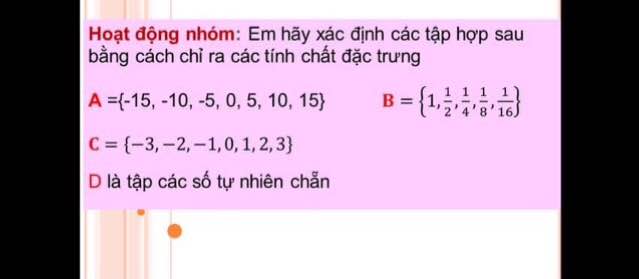
Hãy nhập câu hỏi của bạn vào đây, nếu là tài khoản VIP, bạn sẽ được ưu tiên trả lời.


\(A\cap B=\varnothing\Leftrightarrow2m-7\le13m+1\)
\(\Leftrightarrow11m\ge-8\Rightarrow m\ge-\dfrac{8}{11}\)
\(\Rightarrow\) Số nguyên m nhỏ nhất là \(m=0\)



Câu 2:
\(TH1:m+2=0. \Leftrightarrow m=-2.\)
Thay \(m=-2\) vào BPT ta có:
\(0x+\left(-2\right)^2-3>0.\\ \Leftrightarrow4-3>0.\)
\(\Leftrightarrow1>0\) (Luôn đúng).
Vậy \(m=-2\) thì BPT có nghiệm.
\(TH2:m+2\ne0.\Leftrightarrow m\ne-2.\)
Khi đó BPT có nghiệm \(x>\dfrac{3-m^2}{m+2}.\)
Vậy bất phương trình có nghiệm với mọi giá trị thực của m.

ĐKXĐ: \(x>3\)
\(\Leftrightarrow2x+2\sqrt{x-3}\sqrt{x+3}=\dfrac{4\left(x+3\right)}{\left(x-3\right)^2}\)
\(\Leftrightarrow\left(\sqrt{x+3}+\sqrt{x-3}\right)^2=\dfrac{4\left(x+3\right)}{\left(x-3\right)^2}\)
\(\Leftrightarrow\sqrt{x+3}+\sqrt{x-3}=\dfrac{2\sqrt{x+3}}{x-3}\)
\(\Leftrightarrow\dfrac{3}{\sqrt{x+3}-\sqrt{x-3}}=\dfrac{\sqrt{x+3}}{x-3}\)
\(\Leftrightarrow3x-9=x+3-\sqrt{x^2-9}\)
\(\Leftrightarrow\sqrt{x^2-9}=12-2x\) (\(x\le6\))
\(\Leftrightarrow x^2-9=144-48x+4x^2\)
\(\Leftrightarrow3x^2-48x+153=0\)
\(\Leftrightarrow x=8-\sqrt{13}\)

Đặt \(A=5\cdot7^{2\left(n+1\right)}+2^{3n}=5\cdot49^{n+1}+8^n=5\left(41+8\right)^{n+1}+8^n\)
Áp dụng công thức nhị thức Newton, ta có:
\(\left(41+8\right)^{n+1}=41^{n+1}+\left(n+1\right)\cdot41^n\cdot8+\dfrac{n\left(n+1\right)}{2}\cdot41^{n-1}\cdot8^2+...+\left(n+1\right)\cdot41\cdot8^n+8^{n+1}\)
Vậy \(A=5\left[41^{n+1}+\left(n+1\right)\cdot41^n\cdot8+..+\left(n+1\right)\cdot41\cdot8^n+8^{n+1}\right]+8^n\)
\(\Rightarrow A=5\left[41^{n+1}\left(n+1\right)\cdot41^n\cdot8+...+\left(n+1\right)\cdot41\cdot8^n\right]+5\cdot8^{n+1}+8^n\)
Đặt \(B=41^{n+1}\left(n+1\right)\cdot41^n\cdot8+...+\left(n+1\right)\cdot41\cdot8^n\)
\(\Rightarrow B⋮41\)
Đặt \(C=5\cdot8^{n+1}+8^n=8^n\left(5\cdot8+1\right)=8^n\cdot41\)
\(\Rightarrow C⋮41\)
Mà \(A=B+C\Rightarrow A⋮41\)
\(\RightarrowĐPCM\)

Hàm bậc 2 có \(\left\{{}\begin{matrix}a=1>0\\-\dfrac{b}{2a}=6-m\end{matrix}\right.\) nên nghịch biến trên khoảng \(\left(-\infty;6-m\right)\)
Hàm nghịch biến trên khoảng đã cho khi:
\(6-m\ge2\Rightarrow m\le4\)
\(\Rightarrow\) Có 4 giá trị nguyên dương của m







a: A={1;2;3;4;6;12}
\(B=\left\{12;6;4;3;\dfrac{12}{5};2\right\}\)
c: Số tập con của A là \(2^6=64\left(tập\right)\)
Ví dụ 7:
a) A = {-12;-6;-4;-3;-2;-1;1;2;3,4,6;12}
B = {12;6;4;3;12/5;2}
b) B là con của A
c) 2^12=4096 (tập con)
Hoạt động nhóm:
A = {5k|-3<=k<=3; k nguyên}
B = {(1/2)^k|0<=k<=4; k nguyên}
C = {x| -3<=x<=3; k tự nhiên}